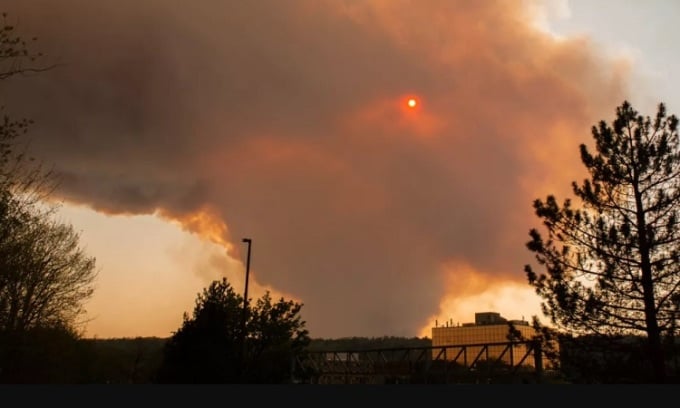Smoke from wildfires in eastern Canada crossed the Atlantic Ocean to Norway, traveling more than 4,800 km.

Smoke from wildfires in Canada. Photo: Abdulkhaled Saad
Earlier this week, smoke drifted across the Canadian border into the United States, blanketing cities on the East Coast, giving New York the worst air quality of any major city in the world. Over the past week, winds have carried smoke from wildfires through Greenland and Iceland to Norway, where it was first detected on June 7. However, the concentration of smoke in Norway is relatively low, according to scientists from the Norwegian Institute for Climate and Environmental Research (NILU).
“When the smoke reaches Europe, the particle count is much lower,” says Nikolaos Evangeliou, a senior scientist at NILU. “This means we can see the smoke as a light mist, and we can notice the smell of smoke. But the particle count is so low that it does not pose a health risk.”
According to NILU's prediction model, based on data from the US National Weather Service's Global Forecast System, the smoke will likely drift over Norway and into southern Europe.
More than 3.8 million hectares of land, an area about a quarter the size of New York, have burned in Canada since the start of the year, said Bill Blair, the federal minister of emergency preparedness. That puts Canada on course for its worst wildfire season on record.
“The distribution of fires on both sides of the coast this year is very unusual,” said Michael Norton, an official with Natural Resources Canada. “At this time of year, fires are typically confined to one side of the coast, mainly the west coast.”
While pollution from the wildfires poses little health risk to Europeans, high levels of fine particles in smoke in cities across the US East Coast can cause respiratory problems such as coughing and difficulty breathing. Health officials in New York and Washington, DC, have advised people in affected cities to limit outdoor activity until the smoke has dissipated to safe levels.
An Khang (According to Live Science )
Source link


![[Photo] Keep your warehouse safe in all situations](https://vphoto.vietnam.vn/thumb/1200x675/vietnam/resource/IMAGE/2025/10/1/3eb4eceafe68497989865e7faa4e4d0e)

![[Photo] Hanoi morning of October 1: Prolonged flooding, people wade to work](https://vphoto.vietnam.vn/thumb/1200x675/vietnam/resource/IMAGE/2025/10/1/189be28938e3493fa26b2938efa2059e)


![[Photo] President of the Cuban National Assembly visits President Ho Chi Minh's Mausoleum](https://vphoto.vietnam.vn/thumb/1200x675/vietnam/resource/IMAGE/2025/10/1/39f1142310fc4dae9e3de4fcc9ac2ed0)



























































































Comment (0)